
Become a member
Join today and help protect nature, beauty and history – for everyone, for ever. Enjoy access to more than 500 places with National Trust membership.
An Italianate Palace in the heart of Suffolk
The Rotunda, Horringer, Bury St Edmunds, Suffolk, IP29 5QE
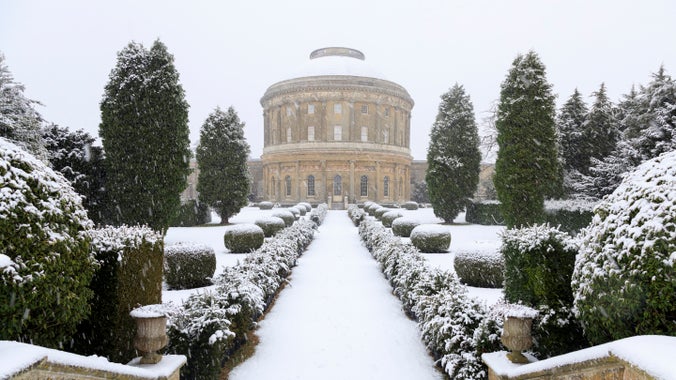
| Asset | Opening time |
|---|---|
| State Rooms | 11:00 - 15:00 |
| Servant's Quarters | Closed |
| Gardens | 10:00 - 16:30 |
| West Wing Café | 10:00 - 16:00 |
| Parkland | 09:00 - 17:00 |
| Welcome Point & Plant Shop | 09:00 - 16:30 |
| Porter's Lodge Café | 10:00 - 16:00 |
| Second-hand bookshop | 10:00 - 16:00 |
| Shop | 10:00 - 16:00 |
| Cycle Hire | Closed |
Ickworth Estate is open all year round with the exception of December 24 and 25, or in the case of adverse weather. Please check here on the day of your visit for last minute changes. *Between March-November as much of the house will be as open as possible, depending on our volunteer numbers. ** House Tours take place at varying times between January-November and are bookable under the Things to see and do/Events page.
| Ticket type | With Gift Aid | Without Gift Aid |
|---|---|---|
| Adult (18+) | £15.40 | £14.00 |
| Child (5-17) under 5s free | £7.70 | £7.00 |
| Family (2 Adults and up to 3 children) | £38.50 | £35.00 |
| 1 adult, 2 children | £23.10 | £21.00 |
| Group (Adult 18+) | £13.30 | |
| Group (Child 5-17) | £6.65 |
Audio-described guides for blind and partially sighted people available from Welcome Point that takes in the approach to the Rotunda and the ground floor rooms.
Second-hand bookshop downstairs from the shop in the West Wing. Lift available.
Porter's Lodge cafe serving hot and cold drinks, snacks and ice cream. Dog friendly.
Large car park and overflow (not always available in wet weather).
Dogs on leads welcomed in the parkland. Sorry no dogs in the Italianate Garden, House or West Wing. Dog water available across property. Dog cup cakes and ice cream available from Porter's Lodge.
Families welcome in House however we ask pushchairs to remain outside. Baby slings and hip slings available to support access. Activity sheets for children available.
Daily House tours and monthly outdoor tours. See upcoming events for more info.
Large plant shop at the Welcome Point by the car park
West Wing Cafe serving light meals, sandwiches, cakes, hot and cold drinks.
Large gift shop with extensive range of books, gifts and local produce.
By Welcome Point, in the West Wing and down by the Walled Garden (closed in Winter).
Blue Badge parking and drop-off point. Accessible toilets. Lift to all levels in the Rotunda and West Wing. Wheelchair and mobility vehicle hire available (restricted access for vehicles in the Rotunda and West Wing).
Albana path (partially accessible - tree roots in some places) and multi-use trail are accessible. Map available from Welcome Point.
Available at all toilets. Additional Accessible toilet in Rotunda basement.
Accessible parking spaces in main car park. Car park has hard surface tarmac, and a tarmac path which leads to the main tarmac drive.
Drop off point outside the Welcome Point. From here the shuttle can be picked up (volunteer dependent) for lifts to the Rotunda and West Wing. Please speak to welcome team for more information on arrival.
Fixed induction loops are available at Welcome Point, Porter's Lodge Cafe, West Wing Cafe and Gift Shop. A portable induction loop is available, please contact Welcome Team prior to visit.
Level access at Porter's Lodge Cafe.
Level access to Plant Shop and Welcome Point.
Geraldine's Walk, near to Porter's Lodge.
Lifts available in West Wing and the Rotunda.
Tight section in basement
Mobility vehicles available for use on the surfaced paths around the estate and the River Linnet (blue) trail. Pre-booking necessary, please contact 01284 736150 prior to your visit. Mobility scooters aren't permitted in the Rotunda and West Wing, but wheelchairs are available for this purpose.
Ramped access into the West Wing and Rotunda. Multi-use trail is fully surfaced, but be aware there are slopes on this route.
Available across the estate and Rotunda.
Steps and uneven terrain in Italianate Garden. Steps into the house and basement. Off-road areas of the estate.
Accessible E-Shuttle run daily between Welcome Point and the Rotunda.
Available from Welcome Point, West Wing and Rotunda.
Christmas celebration have returned to Ickworth Estate. Get ready for Nostalgia, magic and a healthy amount of festive mayhem. Winter Adventures: The Snow Leopard of Ickworth is now in full swing and running right through until 4 January 2026.
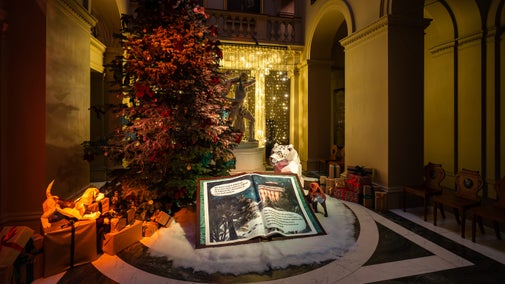
With a rolling programme of events for all ages, take a look at what we have coming up on site at Ickworth
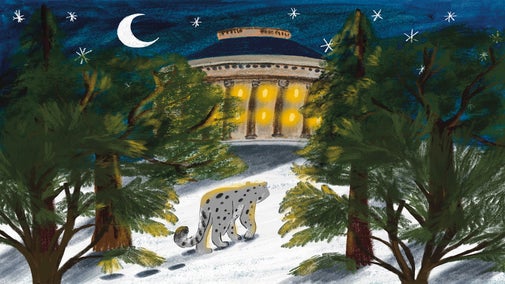
Everyone is welcome at Ickworth Estate. Read on to discover how to make the most of your visit, download the access statement, and find out how to contact us with any questions you might have.

There are loads of different family activities designed to help you explore and discover Ickworth Estate. However you choose to spend your day with us, your adventure starts here.
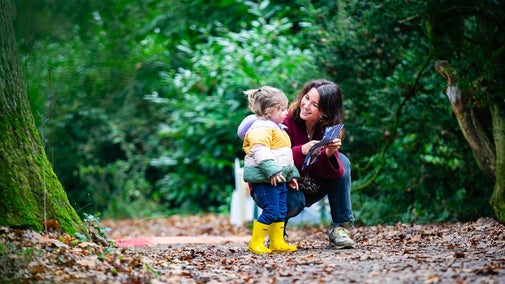
Take a stroll through the gardens of Ickworth. The Stumpery in the Italianate Garden is particularly lovely at this time of year.
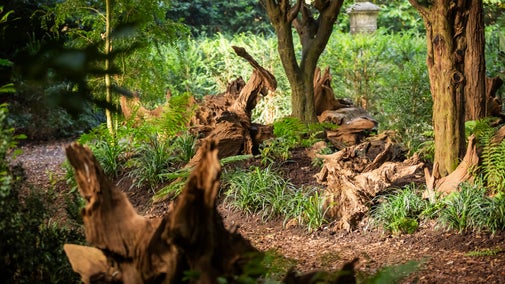
Ickworth Estate is a three pawprint rated place. Let your four-legged friends lead you on a voyage of exploration around miles of parkland, offering new and exciting discoveries.

Want to visit Ickworth as a group? Find all the information you need, from how to book tickets to the benefits you may be entitled to.

The Rotunda, museum accredited, forms the centrepiece of the Ickworth estate. It showcases an internationally renowned art and silver collection.
The Italianate garden encircles the Rotunda; a mix of classical Italy and a touch of drama with a gothic-style stumpery.
Miles of parkland with rolling landscape, ancient woodlands, working farmland and an all-weather multi-use trail.
The West Wing and Porters Lodge cafés offer hot and cold drinks, light meals, snacks and cakes. Indoor and outdoor eating available.
The West Wing shop offers gifts, cards and homeware. The plant shop has gardening accessories and plants. The second-hand bookshop is stocked with pre-loved favourites.
A cycle hire hub is located in the main car park. The multi-use trail is ideal for exploring the estate by bike.
You'll notice a handful of characterful cottages dotted across the estate. These offer holiday accommodation for four to 12 people.
A stately house luxury family hotel, open to residents and non-residents for dining, afternoon tea, spa treatments and accommodation.
Christmas celebration have returned to Ickworth Estate. Get ready for Nostalgia, magic and a healthy amount of festive mayhem. Winter Adventures: The Snow Leopard of Ickworth is now in full swing and running right through until 4 January 2026.

Head to the Italianate Garden to follow the Snow Leopard's journey through the Stumpery. Join Shadow as he meets the wildlife of Ickworth and goes on a Christmas snowy adventure. Assistance dogs only.

Join Shadow the Snow Leopard on his stay at Ickworth Estate, a night to be remembered by mishaps, snowy adventures and friendship.

Join us for a storytelling session in the Stumpery with the author of our Christmas story, The Snow Leopard of Ickworth. Booking essential.

Christmas celebration have returned to Ickworth Estate. Get ready for Nostalgia, magic and a healthy amount of festive mayhem. Winter Adventures: The Snow Leopard of Ickworth is now in full swing and running right through until 4 January 2026.

Discover the house and the treasures collected by the flamboyant 4th Earl of Bristol at Ickworth, a magnificent Italianate palace in the heart of Suffolk.

There are loads of different family activities designed to help you explore and discover Ickworth Estate. However you choose to spend your day with us, your adventure starts here.

Ickworth's garden was the first of its kind in the UK. Designed for privacy, space and freedom, it's a distillation of the gardens of classical Italy given an individual English touch.
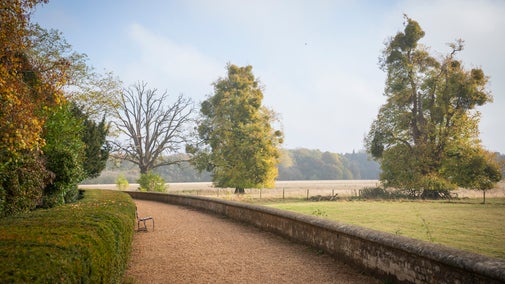
Explore the parkland at Ickworth, encircled with layers of history, landscape and classic architecture. Enjoy space, freedom and inspiring views as you wander at your leisure.
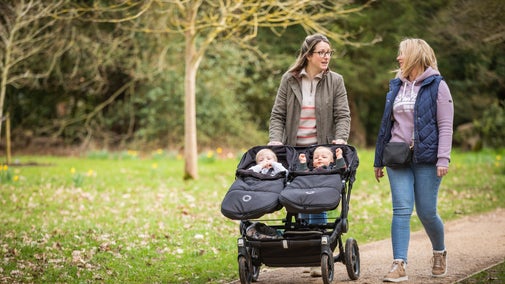
With over 1,800 acres of parkland to explore, find a trail that suits you.
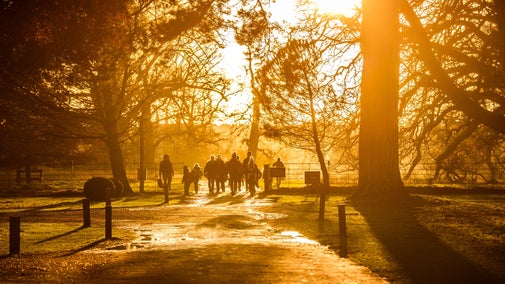
Find out more about cycling at Ickworth, including the cycle hire hub available in the car park. Pack a picnic and start your adventure.
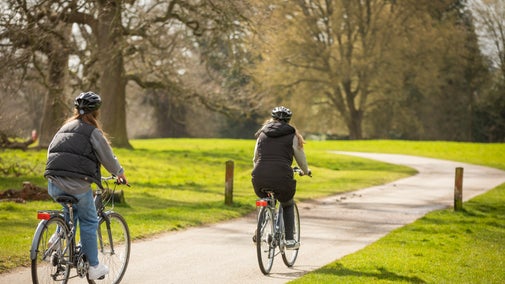
Explore the picturesque parkland at Ickworth on one of the regular Nordic walks around the estate (normal admission applies). To take part, join Positive Steps Fitness and Wellbeing, members of British Nordic Walking and the International Nordic Walking Federation, for a taster session or technique course, then sign up for a walk. For more information and to get involved, email info@positivestepspt.co.uk.

Treat yourself in one of the cafés at Ickworth with a variety of tasty treats, light snacks and hot and cold drinks. Or grab a bargain as a souvenir of your visit in the shop or Plant Centre.

A short circular walk through some of the woodlands around Ickworth. If you have the energy when you walk along the Trim Trail try your hand on various fitness objects, ranging from pole climbing to ladder walks and leap frog.

A circular walk taking you to the Walled Garden, and Canal lake, which is a haven for wildlife. There is a great view of the Walled Garden from the far side of the Canal lake, with St. Mary’s church, and the Rotunda behind.

This route forms the first ½ of the Multi-use track (the 2nd is the Monument Walk). Taking you past Ickworth Lodge and along the River Linnet and up past the Walled Garden and St. Mary’s Church. Buzzard and Kingfishers frequent this area of the park; Roe Deer can be seen at Dawn and Dusk.

This route forms the second ½ of the Multi-use track (The first half is the Linnet Valley trail). Taking you to the Monument at the southern end of the park, passing St Mary’s Church, The Walled garden and returning past the Fairy Lake. One of the highlights is the spectacular view across the Linnet Valley to the Rotunda.
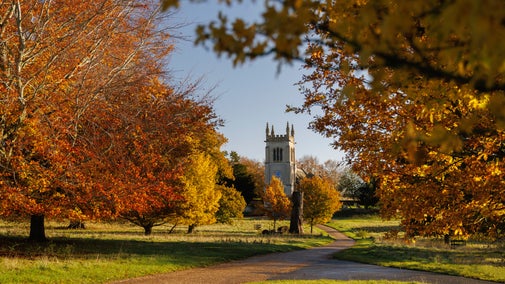
With its history traced back to Domesday, Ickworth Estate has quite a story to tell. Originally managed as a working estate, its status today as a pleasure ground dates back only as far as the early 18th Century. Walk with us around this beautiful parkland and let your imagination fly with our stories of its development over the centuries under the care, love and sometimes eccentric attentions of the Hervey’s and St. Edmundsbury Abbey.

A four mile circular route taking you to the outer reaches of the estate, woodland and visiting Ickworth's two lakes.

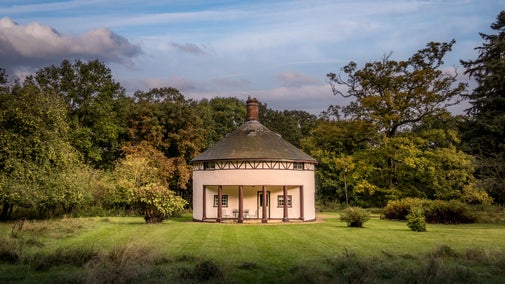
Cosy up in this folky rotunda deep in the woodlands of the Ickworth Estate.

An idyllic stay on the Ickworth estate with a lakeside garden and homely interior.

Escape city life in this Victorian cottage set on the Ickworth estate and surrounded by farmland.

Stay in this characterful Georgian cottage, once the home of the Ickworth estate gatekeeper.

A Victorian farm cottage set on the Ickworth estate and finished with an elegant décor.
A stately house luxury family hotel within the East Wing and Dower House, open to residents and non-residents for dining, afternoon tea, spa treatments and accommodation.
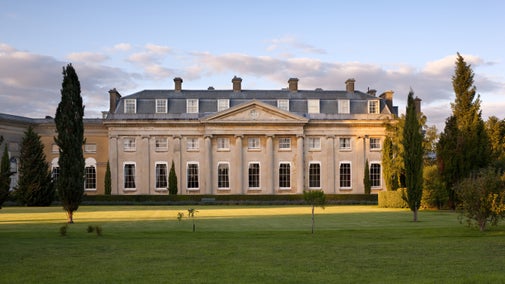
Follow the Snow Leopard's journey through the Stumpery in the Italianate Garden as he meets the wildlife of Ickworth and goes on a Christmas snowy adventure.
Join Shadow the Snow Leopard on his stay at Ickworth, a night to be remembered by mishaps, adventure and friendship.
Hear the stories of the servants who lived and worked at Ickworth as you discover the hustle and bustle that went on below stairs.
Join one of our new social walks and meet up with likeminded individuals as you enjoy a short walk around the beautiful grounds at Ickworth Estate.
Explore the secrets of Ickworth's history and collections through a guided tour that takes you behind the scenes as winter conservation work takes over the Rotunda.
With over 1800 acres of parkland, gardens and brand new all-weather path to enjoy, Ickworth is the perfect place to get back to nature.
Discover formal gardens, pleasure grounds, rolling Suffolk landscape and woodlands all which invite gentle strolls, long walks, runs, bike rides and picnics.
Head into the Rotunda and see Ickworth's array of treasures. Then stop off at one of our cafés to get a bite to eat and treat yourself in one of our shops.
Discover Ickworth’s fascinating history, from the people who’ve lived here over the centuries, to how it came to be what you see today.

Learn about the different generations of the Hervey family, and how they each contributed towards creating the Ickworth estate.

Ickworth is home to one of the most important collections of 18th-century silver in Europe. Learn more about the collection at Ickworth in Suffolk.

The ash trees of Ickworth are under threat from a disease that’s arrived from Europe. Find out how we are managing this and other issues across the estate.

The 1st Earl’s Summer House is one of the oldest buildings at Ickworth Estate. This year we are carrying out vital conservation work on the Summer House so that you can experience the Walled Garden from this idyllic setting once again. Find out more about this project and how you can support it.
Discover how Ickworth completed a major conservation project to repair the Rotunda roof and safeguard the future of this classic Italianate building for years to come.
There are many different ways that volunteering with the National Trust at Ickworth can benefit you. Find out more and meet a member of the team.

Your gift will help to conserve and protect Ickworth Estate for future generations to enjoy.
£25 could help buy our house and collections care team 10 new hogs hair brushes for careful cleaning of our historic treasures.

Join today and help protect nature, beauty and history – for everyone, for ever. Enjoy access to more than 500 places with National Trust membership.
By sharing your email address you’re agreeing to receive marketing emails from the National Trust and confirm you’re 18 years old or over. Please see our for more information on how we look after your personal data.